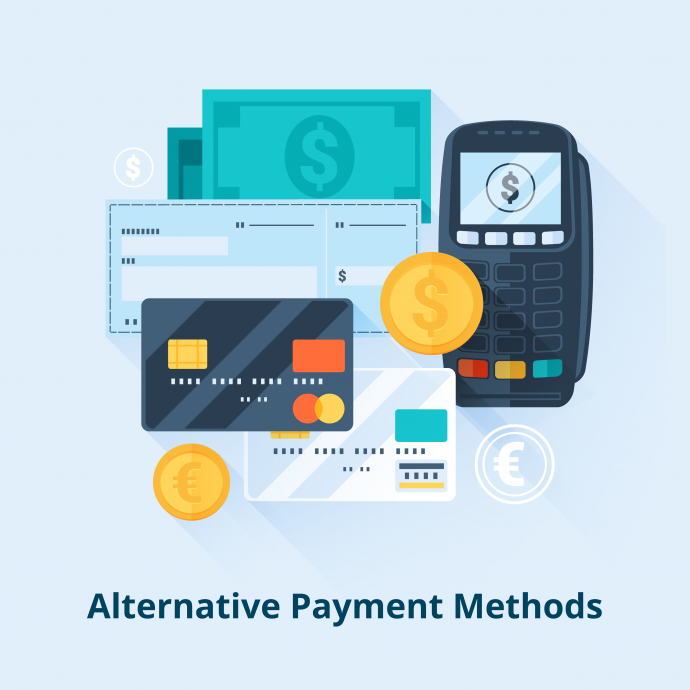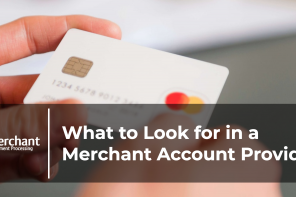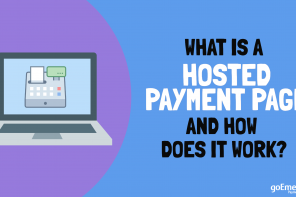Alternative payment methods have changed the way business transactions are processed all around the world. Offering your customers multiple payment options is something that is expected by today’s average consumer. Americans tend to carry little cash with them on a daily basis, and if you don’t accept credit cards you may lose sales to your competitors that do. Alternative payment methods will provide the opportunity to capture a greater number of sales and make it easier for shoppers to spend more per purchase.
The Blackhawk Network study, How America Pays in 2016, surveyed more than 1,000 Americans in March 2016 to examine their preferences for traditional and emerging payment tools, and the role payments play in their purchasing decisions. Key findings indicate consumers are inciting significant innovation in payments by spurring the creation of new payment technologies, finding alternative applications for existing payment tools or embracing a wide array of burgeoning payment products.
Multiple payment methods must be part of the business strategy for traditional brick-and-mortar merchants to succeed. Likewise, alternative payments to cash are a necessity for eCommerce and MOTO (mail-order/telephone-order) merchants.
Whether you accept payments in person, online, on your website, or mobile device, you’ll want to deal with a reputable merchant services provider for secure payments that are simple to implement and easy to use.
EMV® and NFC Credit Card Processing
Alternative payments methods are made possible with credit card machines that offer EMV® and near field communication (NFC) technology for secure payment solutions. EMV and NFC credit card processing terminals make it possible for you to accept various payment forms such as EMV chip cards, contactless and mobile payments. Benefits of becoming EMV compliant will also reduce your risk and potential liability of credit card fraud.
Apple Pay™, Samsung Pay ™ and Android Pay™
To take advantage of Apple Pay NFC-powered contactless payments, you will need a way to process credit cards with a merchant account, a functioning point-of-sale (POS) device and an NFC-enabled terminal.
Samsung Pay payment transactions use both NFC and magnetic secure transmission (MST) technology which allows the phone to emulate a traditional card with a magnetic stripe. That means you don’t need an NFC-capable terminal, But this will limit your options as you won’t be able to accept Apple Pay or Android Pay without one.
Android Pay is the successor to Google Wallet, Google’s contactless payment solution/mobile wallet (launched in 2011) and works on any Android smartphone running the KitKat OS (Android 4.4) or higher. It’s NFC-powered, with support for debit and credit cards as well as loyalty/rewards programs. An in-app payments feature is set to launch later.
Added Security Measures
Mobile payments like those previously mentioned have several measures for security. With Apple Pay, merchants don’t handle buyers’ credit card numbers because Apple Pay uses tokenization, which generates a single-use code instead. So if a hacker gets the transaction information, it’s useless because the number is good for one time only. Also when using Apple Pay, the purchase must be confirmed with the TouchID fingerprint sensor along with a tap of the phone to the terminal. Samsung Pay works similarly, requiring launching the app, swiping a fingerprint and a close pass of the phone to the terminal.
Finally, the phone itself provides some security. The card numbers are kept in the cloud (not stored on the device). Plus the device can be locked remotely if ever stolen. A secure element (or a separate chip) enables the system to communicate directly with the NFC-capable unit, so the CPU never handles the processing of the NFC transaction either.
Alternative Payment Methods Online
ACH (short for Automated Clearing House) is useful as an alternative, or in addition to, accepting credit cards. ACH is an electronic transaction from one bank account to another; It is initiated by a business to debit an account by submitting an ACH file. This file contains all the ABA numbers and account numbers to debit, along with the amounts and is submitted for processing nightly. It passes through networks controlled by the Federal Reserve. ACH payments are not guaranteed; they may bounce and must clear much like a check does.
A virtual terminal is an alternative to using a traditional credit card terminal to process transactions. It is a secure website that enables a merchant to accept credit card, debit card and ACH payments through any computer with an Internet connection. It typically also allows merchants to perform a number of additional functions, including transaction verification and reporting. It is also useful as a recurring billing engine.
Integrated Payments
Using an integrated payments solution from a PA-DSS (Payment Application Data Security Standard) certified vendor ensures important security benefits. You can rest assured that all exchanges of payment data are secure and PCI compliant with PCI security standards, which mandate that businesses safely encrypt and store PIN numbers, CVV2 numbers and magnetic stripe data.
Still have questions, or want to learn more? We can help you by offering advice on alternative payment solutions that may reduce costs, improve your productivity and increase your bottom line. Contact goEmerchant today!




